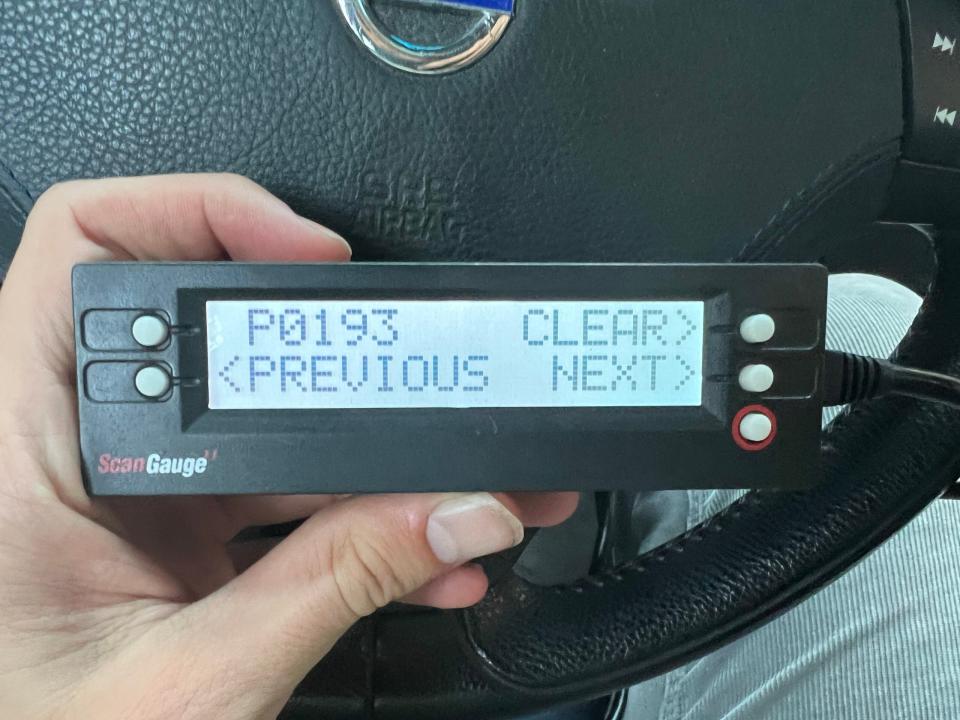My Volvo V70 R Feels Younger After Fresh Spark Plugs and an Engine Mount

My daily-driver 2005 Volvo V70 R has been dependable, despite its 185,000-mile odometer reading and age. It’s never broken down or left me stranded, and outside of oil changes I’ve replaced only brakes, tires, a minor sensor, and the original radiator and air conditioning compressor. This spring, I gave it a little more love to hopefully prolong its life.

The most significant issue I’ve faced with my Volvo (so far) was a confounding highway stumble at steady-state cruising. The car eventually threw a code, which I traced to a faulty fuel rail pressure sensor (the V70 R uses a sensor on the fuel rail rather than a fuel pressure regulator). One $50 sensor and an hour later, I was back in business.

When an unfortunate accident took out my close friend’s E90 BMW, I was happy to let him borrow my trusty wagon for a couple of weeks while he dealt with insurance and figured out a replacement vehicle. I was in California for work and visiting family anyway, and my wonderful fiancee wouldn’t need to move the car for weekly street cleaning. It was a win-win.
I believe in letting trusted friends drive and borrow your project cars as part of the sorting-out process. As you drive something regularly, you get attuned to its flaws and quirks, and a fresh set of eyes can often determine whether that clicking sound or vibration at speed is a mission-critical issue or just an annoyance. But this car is my daily, and, I thought it was sorted.
I thought.

Signs of Trouble
My friend Ross picked up the car, ironically, from another friend who had borrowed it to transport a large mirror. I didn’t hear anything for a day or two. Then, he reported a cold start misfire that went away after a few seconds. The next day, the car misfired again, going into limp mode as he pulled away from a light. At the advice of your nearest IT professional, he shut the car off and turned it back on, and everything appeared to be normal.
Luckily, Ross is mechanically inclined and owns an OBD-II reader. He pulled the codes: P0301, for a misfire in cylinder one, and P0300, a code for a general or random misfire.
Since the issue was intermittent and seemingly affecting one cylinder more than the others, I suspected the ignition system to be the culprit. Spark plugs and coil packs generally last a while, but I’d never changed them out on this car. I have a parts receipt from the previous owner that includes plugs but not coils, which isn’t unheard of because plugs are cheap and coils are relatively expensive. I ordered a set of each from FCP Euro and told Ross to let me know if the issue came back (it didn't).
Tune-Up Time
When I returned to New York, we set aside a Sunday afternoon to do the job. Changing spark plugs on a transverse-mounted, inline-engined car is a relatively easy task that I’d recommend anyone interested to try at home. (On the other hand, changing spark plugs on a boxer engine in a dorm parking lot, as I once did, is a task I wouldn’t wish on my worst enemy.) Since you’re poking around the engine, it’s also a good chance to check on your car’s belts, seals, and even inspect for signs of rodent damage.
To change a set of spark plugs in most cars, you need a ratchet handle, a decent extension, a normal socket set, a deeper spark plug socket set, a set of feeler gauges, and a torque wrench. I’d also recommend a set of disposable gloves. As with any repair, there may be make- and model-specific quirks, so I recommend checking out a YouTube video for your specific car ahead of time so you can be prepared for any additional tool requirements.



 Yahoo Autos
Yahoo Autos 